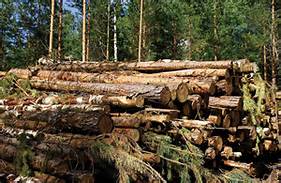|
Chip quality market data will enable Baltic States to further capitalize
on the energy chip export industry as it expands.
The latest data from Eurostat indicates that the European Union is on track
to meet its renewable energy target of 20 percent by 2020. In 2014, with six
years left to reach that goal, 16 percent of the region¡¯s energy was derived
from renewable sources. The Baltic Rim countries have been some of the most
successful, with Sweden (49 percent), Finland (38 percent), Estonia (25
percent) and Lithuania (23 percent) already exceeding their shares. Denmark
(30 percent), Latvia (40 percent), Poland (15 percent) and Germany (18
percent) are on trajectory to meet their targets, though they have yet to do
so.

Demand
One of the many components of these countries¡¯ plans to successfully meet
2020 targets is a commitment to district heating (DH) and
combined-heat-and-power (CHP) projects. Though these countries either have
already met or are quickly approaching their targets, they continue to
invest in small-scale DH and large-scale CHP projects.
Denmark is a good example of this. Just 0.8 percent shy of its target, the
country is slated to get two new CHP plants between now and 2019. Dong
Energy plans to open a 280-MW CHP plant in Fredericia in 2017, a facility
that will be fueled primarily by wood chips and use an estimated 700,000
metric tons annually, and near Copenhagen, Hofor plans to open a 500-MW CHP
facility that is expected to consume 1.2 million metric tons of wood chips
annually.
Denmark is not the only Baltic Rim country ramping up its biomass CHP
capacity. Also coming online in 2019 is a newly announced, 150-MW facility
in Lahti, Finland. So where will the fiber supply come from to meet this new
demand? Among the most likely suppliers will be the Baltic States. With
modern and well-developed forest products industries (sawmills, panel mills
and pellet mills); effective and efficient harvesting, processing (chipping)
and transportation infrastructure; an excess supply of biomass (annual
harvests equal approximately 70 percent of net annual growth in the region¡¯s
forests); and a history of strong export partnerships, the Baltic States are
poised to take advantage of these market opportunities.
Baltic States Wood Fiber Supply
According to the United Nations Economic Commission for Europe,
approximately 30 million cubic meters of timber are harvested annually in
Latvia, Estonia and Lithuania. Approximately 50 percent of the annual
harvest is in the form of saw and veneer logs and 26 percent is pulpwood, a
product that has very limited capacity for consumption in the immediate
region. Other roundwood makes up 4 percent of the annual harvest, and wood
fuel makes up another 20 percent.
Wood Chip Classifications
Wood chip classifications in the Baltic States can be fluid; they can vary
based on source, quality and market conditions and destination. In Latvia,
for instance, chip producers supply pulp quality conifer and hardwood chips
to pulp and paper facilities in both domestic and export markets. In
addition, they produce technology and energy chips for domestic and export
markets that are sometimes interchangeable and sometimes not, depending upon
their destination. These include:
• Forest residue-quality domestic energy chips: Domestic energy chips are
generated from forest residues, chipped in woods post-harvest and used to
fuel DH and CHP plants.
• Forest residue-quality export energy chips: Excess supply of forest
residue quality energy chips are exported to Finland and Sweden.
• Domestic technology chips: In Latvia, hundreds of small sawmills do not
have debarking capacity. Bark remains on slabs after logs are canted, and
this material is stored on site awaiting chipping. Chip producers then send
mobile chippers to these mills to create technology chips that are delivered
domestically to medium-density fiberboard or wood pellet mills, a growing
business in the region.
• Danish-quality export energy chips: Excess supply of technology chips are
exported. Denmark sources this higher-quality energy chip from Latvia
because it has a lower ash content than forest residue energy chips.
Challenges Remain
While the Baltic States have much of what they need to capitalize on the
export energy chip trade as it expands, perhaps the single most important
missing ingredient to aid this expansion is the kind of market transparency
that high-quality market pricing information brings.
With these eight categories of wood chips, all produced from different raw
material with varying chipping and transportation costs, pricing will
challenge suppliers who are trying to maximize their revenues, as well as
consumers who are trying to keep their wood costs low. As export
opportunities for this underutilized material from the Baltic States grows
over the rest of this decade, the addition of high-quality market data will
create the kind of transparency that will allow for more orderly sales and
purchases of this material, and support the types of long-term supply
agreements that will stabilize the market for long-term benefits for the
industry as a whole.
¡¡
Source: BiomassMagazine.com |